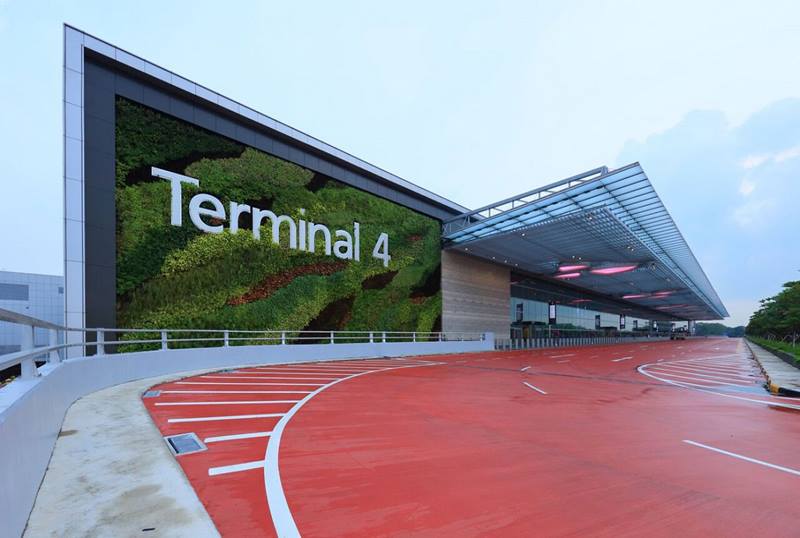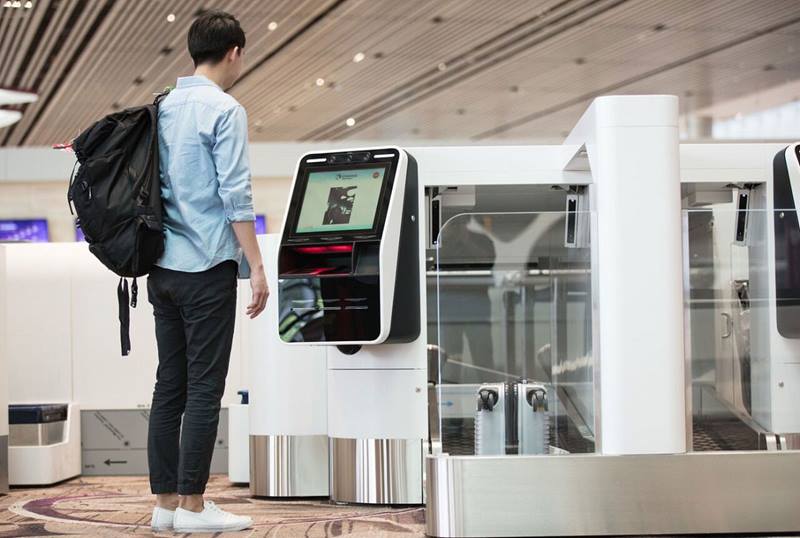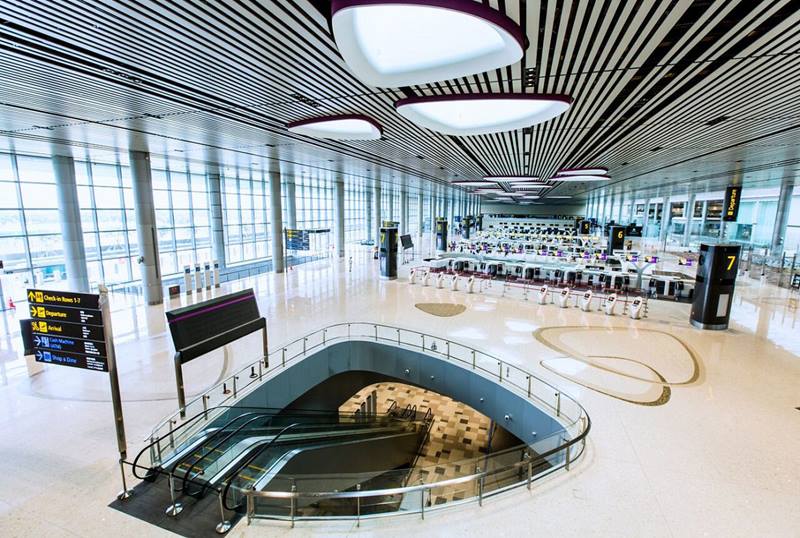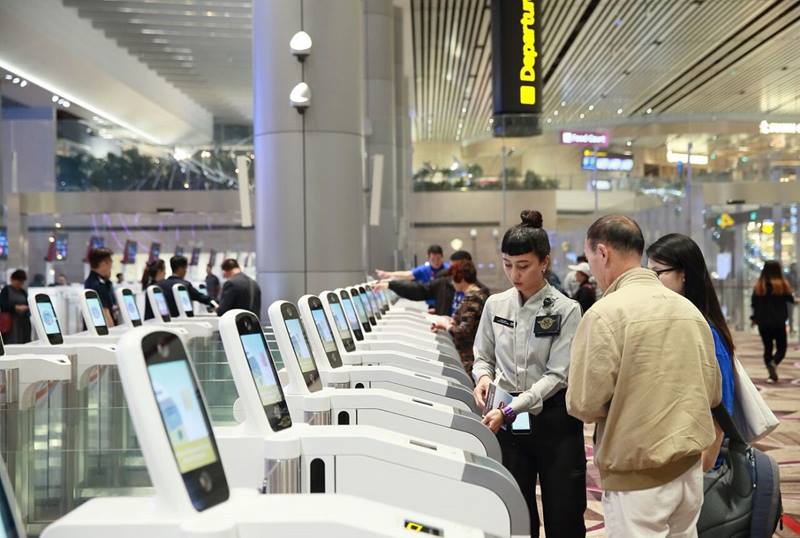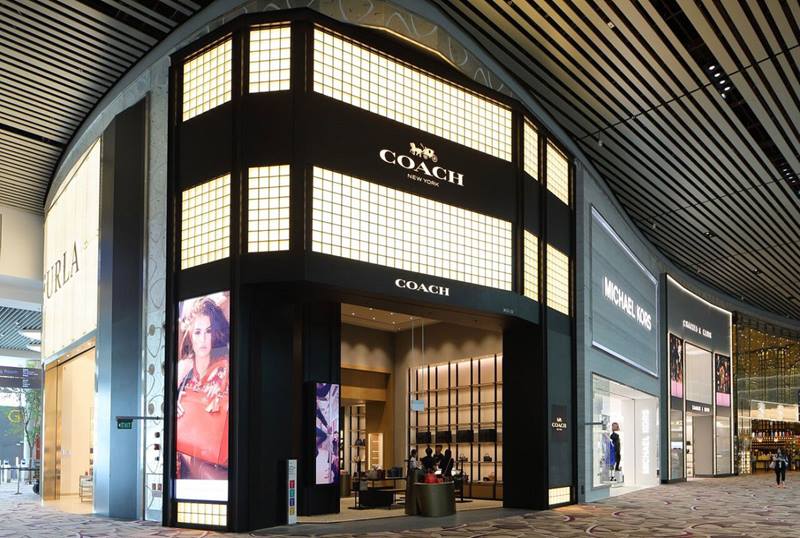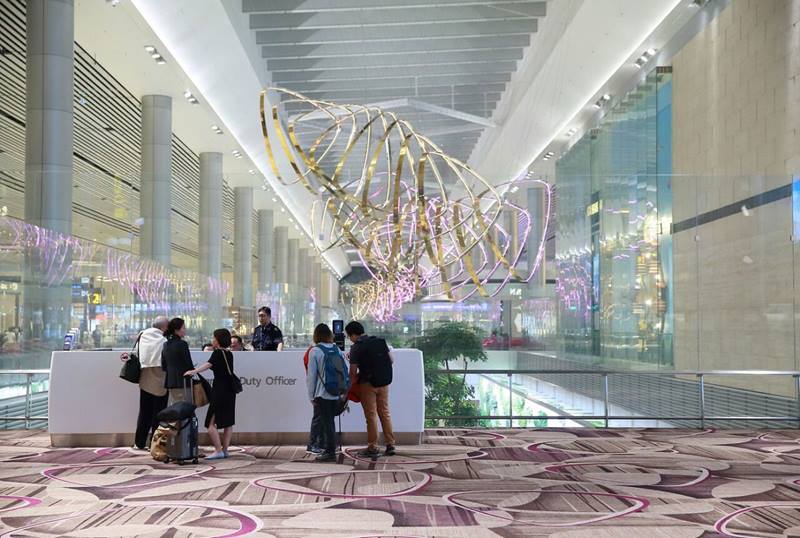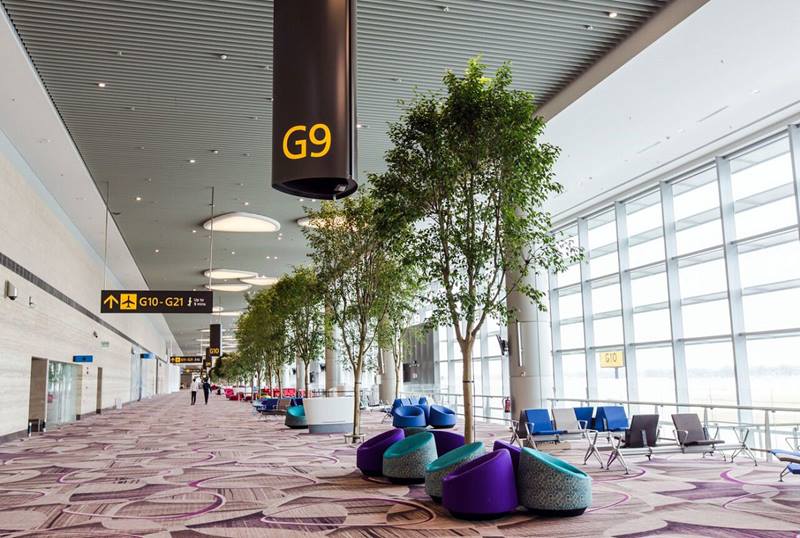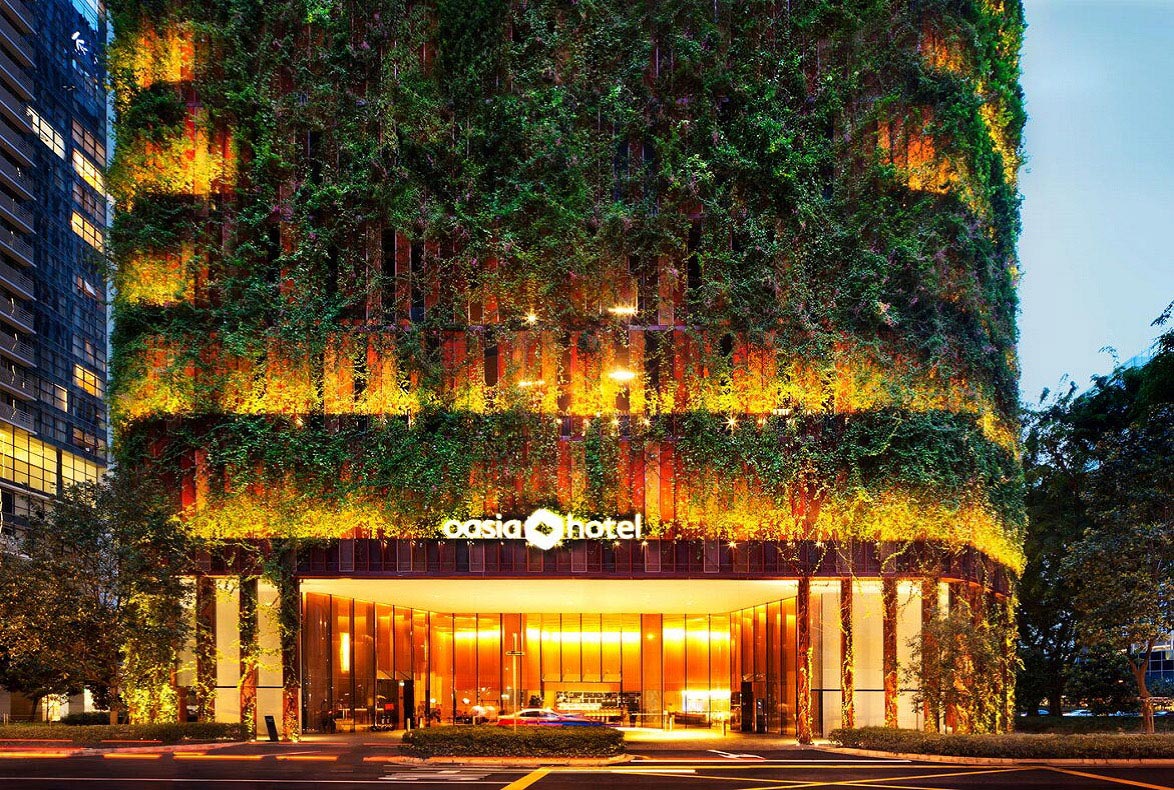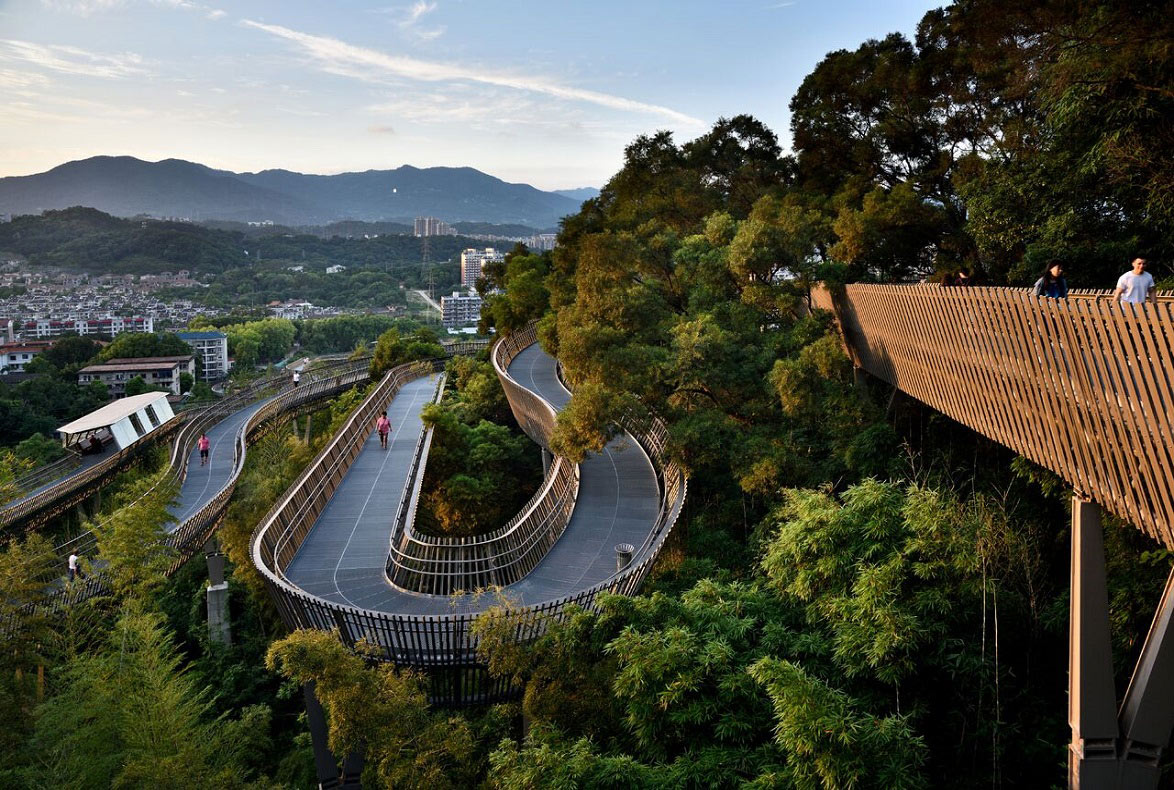DESIGN OF THE YEAR 2018
Singapore Changi Airport Terminal 4
Designer
Changi Airport Group (S) Pte Ltd
CONTACT
[email protected]
The airport welcomes and sends off every passenger to a country. It is also where passengers need to be processed efficiently. Singapore Changi Airport Terminal 4 (T4) combines these two seemingly conflicting roles—one of offering hospitality, the other of providing logistics—to offer passengers both a seamless and delightful journey.
This experience design project led by Changi Airport Group (CAG) redefines the typical airport experience from the moment passengers alight at T4’s departure hall. A kerb-less entrance invites them to simply roll in their luggage, while automated kiosks inside the airport turn check-in and bag-drop into a self-service experience. The routine security screening at departure becomes an entertaining encounter with a 70-metre-wide LED screen that comes alive with enthralling animation and music.
In addition to these redesigned touchpoints, T4 employs automation and parallel processing technology to take over much of the mundane work of processing passengers. This frees up airport staff to offer better personalised service and also gives passengers the time to enjoy T4’s many amenities, including a heritage zone, various public artworks and even shopping.
The innovative design of T4 points to a future transformation of airports. No longer mere transitory checkpoints, they will become lifestyle destinations to be looked forward to.
About the Designer
As the company managing Changi Airport, Changi Airport Group (CAG) undertakes key functions focusing on airport operations and management, air hub development, commercial activities and airport emergency services. Since the inaugural flight took off from Singapore Changi Airport in 1981, the airport has grown in over three decades from an annual passenger traffic of eight million to over 60 million today. Changi Airport has also established itself as one of the world’s most awarded airports, with more than 550 accolades under its belt. CAG defines itself through service and aspires to be the world’s leading airport company.
ARCHITECT
SAA Architects Pte Ltd
DESIGNER
Changi Airport Group (S) Pte Ltd
LANDSCAPE DESIGNER
ICN Design International Pte Ltd
MECHANICAL AND ELECTRICAL CONSULTANT
Beca Carter Hollings & Ferner (S. E. Asia) Pte Ltd
CIVIL AND STRUCTURAL CONSULTANT
Aecom Singapore Pte Ltd
INTERIOR DESIGNER
Benoy Limited
MAIN CONTRACTOR
Takenaka Corporation
QUANTITY SURVEYOR
Arcadis Singapore Pte Ltd
ARCHITECT
SAA Architects Pte Ltd
DESIGNER
Changi Airport Group (S) Pte Ltd
LANDSCAPE DESIGNER
ICN Design International Pte Ltd
MECHANICAL AND ELECTRICAL CONSULTANT
Beca Carter Hollings & Ferner (S. E. Asia) Pte Ltd
CIVIL AND STRUCTURAL CONSULTANT
Aecom Singapore Pte Ltd
INTERIOR DESIGNER
Benoy Limited
MAIN CONTRACTOR
Takenaka Corporation
QUANTITY SURVEYOR
Arcadis Singapore Pte Ltd
1Travel your way
T4 is designed for the passenger to take control of the entire airport experience beginning from a kerb-less entrance where passengers can simply roll their luggage in.
(Photo by: Changi Airport Group)2Travel your way
Another key feature is the Fast and Seamless Travel (FAST) initiative that enables passengers to check in and drop off their luggage, and go through immigration and boarding all by themselves.
(Photo by: Changi Airport Group)3Travel your way
From an easy-to understand user interface to a comfortable height for ease of dropping luggage or passport scanning, the kiosks were designed and tested extensively to ensure passengers can easily take over a service traditionally done by airport staff.
(Photo by: Changi Airport Group)4Elevating the airport experience
T4 offers both passengers and staff a new definition of the airport journey. From check-in to security screening, many of the processes have been redesigned to be more convenient and pleasant while meeting international standards for air travel.
(Photo by: Changi Airport Group)5A lifestyle destination
T4 represents the future of airports as more than just a travel node, but an experiential space for passengers. T4’s integrated duty-free zone and new double-volume shops allow tenants to offer a high-quality shopping experience similar to downtown malls.
(Photo by: Changi Airport Group)6The art of travel
Artworks installed throughout T4 add another dimension to the airport experience. The centrepiece is “Petalclouds”, a grand kinetic sculpture suspended 200 metres across the airport and synchronised to animated light and music. Another work in the transit area is “Steel in Bloom”, a six-metre sculpture featuring intricate botanical motifs.
(Photo by: Changi Airport Group)7Redefining the Changi experience
Changi Airport Group developed T4 to offer its much-celebrated airport experience with a twist. The new terminal is less formal than its predecessors and uses design to inject a sense of fun into the airport experience. This extends from the colourful chairs and interiors to the vibrant graphics that greet passengers everywhere they turn.
(Photo by: Changi Airport Group)8Redefining the Changi experience
Changi Airport Group developed T4 to offer its much-celebrated airport experience with a twist. The new terminal is less formal than its predecessors and uses design to inject a sense of fun into the airport experience. This extends from the colourful chairs and interiors to the vibrant graphics that greet passengers everywhere they turn.
(Photo by: Changi Airport Group)Insights from the Recipient
Yam Kum Weng (KW ): We wanted to bring the “Changi Experience” to a new level. After many rounds of brainstorming, we came up with a theme that comprises three elements: fun, vibrant, and positively surprising. We aspired for every touchpoint to embrace these elements and for T4 to feel less formal than the existing terminals.
The other thought was: how can we design T4 to better serve our 3,000 staff working in that terminal? How do we create an environment that helps them deliver better service? How do we use automation to help them do more with less, especially with the current situation of manpower constraints and challenges of an ageing population? How do we design T4 such that all the staff look forward to coming to work every day? We paid a lot of attention to the details: down to the lighting, work desks and the ergonomics of the counters and chairs.
We approached the design of T4 from two perspectives: architectural and process design. We wanted to make T4 feel a little bit like a boutique hotel where you’ll feel some special touches of design. We were also aiming to be fast and seamless. I’m proud to say that at T4, there’s no queue at immigration.
KW: When we first started, we really thought about whom we are positioning T4 for. This was previously a budget terminal. We did surveys and research to find out what passengers want. We spoke to our retailers too. We asked our airline partners what the trends in their business models were. We found that passengers wanted more than a budget terminal. They wanted a good experience, reliability and something different. For the retailers, they did not want to be associated with the word “budget”. Imagine a fashion retailer operating in a budget terminal; it’s a big disconnect between their brand and the terminal. The airlines also told us that the business models between full-service and low-cost carriers are blurring and not as distinct as in the past. This is why we decided to position T4 as a premium terminal, but we injected a “twist” from our existing terminals.
Jayson Goh (JG): One of the challenges was how to raise efficiency by automating the processes, but at the same time bring about a great experience for the passengers. We paid a lot of attention in the design considerations of FAST so that we could run parallel processes. Even when there’s no human in the process, the service level is not just the same but even higher.
People don’t realise how difficult it is to remove functions that used to be done by humans and automate it. We have to pay a lot of attention in ensuring the new technology meets not just the security requirements and efficient operations, but also passenger experience. While designing FAST , we had to consider the various steps needed to complete the processes, the kind of questions that appear on the screen to guide passengers, and even how the screen looks. These come together to make the system easy and fast for passengers to use. With FAST , we can process more passengers at every touchpoint. More importantly, it’s a pleasant surprise when the processing time is shorter than what passengers expect!
We believe that self-service doesn’t mean no service. The passengers love the automated system because of how easy it is to use. The entire process is taken into consideration—how intuitive the steps should be, how do we leverage on technology to make the whole process efficient. The response we always get from passengers is: “Oh, you mean it’s done?” That’s the kind of response we look forward to hearing.
JG: What you want to achieve with technology and design is that the passenger doesn’t even notice it. The subtlety of design, such as facial recognition, are all embedded in FAST . We call it parallel processing. As passengers are scanning their passport, the facial recognition and checks on their identity are done at the same time in the background. As far as the passenger is concerned, the number of steps they have to go through is reduced. We’re confident that our automated system is faster than the conventional system in other terminals. Now that the passengers spend less time during check-in, they can spend more time enjoying the rest of the amenities designed for them.
Automation also reduces the manpower required at the check-in and bag-drop stations. In the past, our staff used to sit behind the counter to do the processing. Now that this job is taken over by the machine, they can come to the side of the customer and serve them. The staff love the new automated system because their job is easier and they get to interact more with the passenger. This redesign of the whole process also allows staff to upskill their capabilities.
KW: When designing T4, we tried to stay within Changi Airport’s DNA but with a twist. The colours at T4 are more exuberant. The seats are not the usual airport seats—they are fun, colourful and of different designs. The other example is the immersive experience. When you are going through immigration, you’ll be surprised by a 70-metre-wide immersive wall, which features elements and unique content that many Singaporeans have not seen before. It looks like a stone carving that depicts elements of Singapore, but if you look closely, the butterflies flutter and the elephant trunk can move. These are positively surprising elements that reduces the stress of the passengers.
JG: One of the key discoveries is how design can help the staff serve better. Security screening is traditionally one of the most stressful touchpoints of the airport experience, but this changes now with the immersive wall. When passengers approach the security screening, you’ll realise that the first sentence from the staff may no longer be: “Sir, please remove your shoes and laptop.” Now, they may say: “I hope you are enjoying the immersive experience you are about to embark on.” It changes the entire interaction that the staff can initiate with passengers. These subtleties help us discover new ways to surprise a passenger, and also makes the work environment much more pleasant for the staff.
Citation
Jury Citation
Nominator Citation
Liu Yanling
General Manager (Departure Experience)
Changi Airport Group
Singapore Changi Airport Terminal 4 (T4) is a study in the design of user experiences. We all travel and fly, and airports are often one of the biggest pain points of the journey. T4 has transformed the airport experience by redesigning almost every aspect of the traveller’s interaction with staff, systems and processes.
This could only have been possible through meticulous research and stakeholder engagement. The design team’s ethnographic examination of the user journey and needs was almost forensic in its commitment to detail. Stakeholders, vendors and partners were extensively engaged on the team’s vision. The entire user journey was comprehensively stitched together—with impressive attention to its every aspect.
A key aspect of the systemic redesign of check-in, immigration and security processes is the use of technology with a heart. The automation of many functions, from cleaning to baggage check-in, has redesigned job scopes and noticeably freed up staff to interact meaningfully with travellers. High-stress moments at security screening are mitigated with clever placement of room-spanning video screens displaying content that soothes. Kinetic artwork and installations throughout the terminal provide moments of theatrical magic and virtual ballet.
The T4 team—a group of designers, maintenance staff and management united by a common goal—has broken new ground in transforming the airport experience with an underpinning philosophy of “making every single act better”. The result is something delightful, surprising and uplifting.
It is astounding the degree of detail that Changi Airport Group (CAG) has gone into to design and perfect T4. The airport epitomises Changi’s efforts in making itself a unique transportation hub that escapes the perfunctory to offer its guests new perspectives and inspiration. T4 has elevated air travel to one which brings unexpected surprises and creates lasting memories for its visitors and passengers.
The design of T4’s airport systems pushes the boundaries of airport processing. Its check-in, bag-drop, immigration and boarding are highly automated with state-of-the-art facial recognition systems to make the passengers’ journeys more seamless. To the airport community, the high level of automation also reduces the traditionally labour-intensive processing of passengers, permitting staff to do more value-added work and engage our passengers.
T4 demonstrates that function can co-exist seamlessly with form. Every space in the terminal—be it installation art, chairs and seating, immersive experience zones, check-in systems, landscaping, etc—was carefully curated to transform necessary airport processes and infrastructure to touchpoints that can delight and entertain passengers and visitors.
The airport also advances Singapore’s national branding, culture and heritage. Apart from the Peranakan shopfronts and immersive LED walls, the building is themed around our national flower, the orchid, which is scattered as petals along the walkway ceilings and enshrined in T4’s signature garden, Steel in Bloom. The building was also designed with many open social and community spaces for visitors and travellers to congregate, interact and exchange experiences.
Rarely does one encounter a building where design permeates each and every space; is customised to complement the activities that take place within; and is sensitive to its dwellers’ needs for safety, a sense of comfort and self-actualisation.

